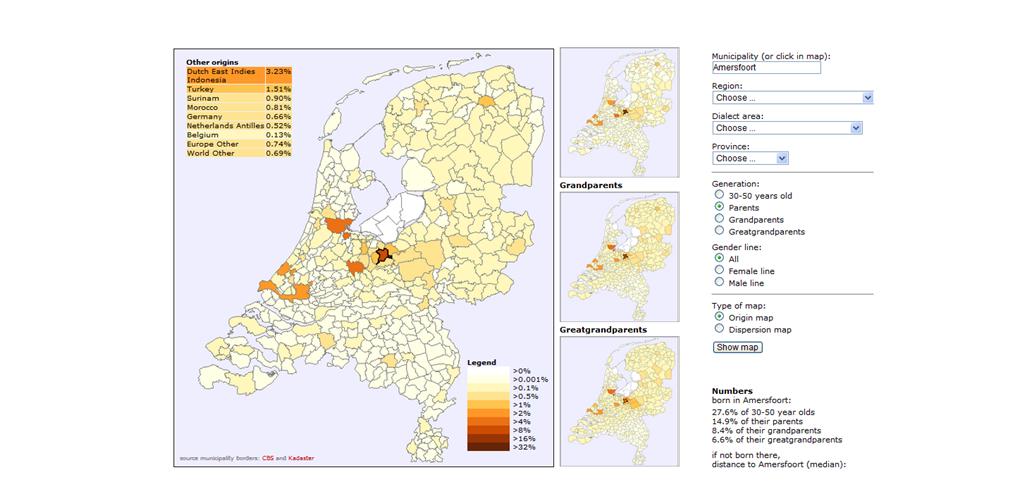
CLARIN-NL project MIGMAP has developed a fascinating web application for studying migration patterns in the Netherlands during the 20th century. The application has been developed by UiL-OTS (Utrecht University) and the Meertens Instituut under supervision of Gerrit Bloothooft (UU).
People do not always stay in the place where they were born. The new application allows users to generate maps that show the dispersion of people in The Netherlands during the 20th century at the level of municipalities. Per municipality it is shown where the ancestors of the current residents came from, and where descendants of the inhabitants of a century ago live nowadays. There are maps of The Netherlands that show where residents, who were between the ages of 30 and 50 in 2007, of some municipality were born. But also maps that show the place of birth of their parents, grandparents and great-grandparents. Reversely, one can choose maps that show the current place of living of children, grandchildren and great-grandchildren of persons that were born in a specific municipality between 1880 en 1900. The maps show the distances people move from their ancestors, for several generations. This is important to understand the dispersion of, for instance, dialects, family names, traditions and cultural expressions. It is not only possible to choose one of the 443 municipalities of The Netherlands as a target area, but also one of 40 regions, 24 dialect areas, or 12 provinces. For each of these target areas, the birthplaces of ancestors or the current residence of decedents are still shown at the municipality level.
The MIGMAP website has aroused many people’s interest. For instance Ronald Plasterk, minister of the Interior and Kingdom Relations, tweeted about it and several Dutch newspapers, like de Volkskrant and Trouw, have written articles about the website. Project coordinator Gerrit Bloothooft was also interviewed on national radio.

